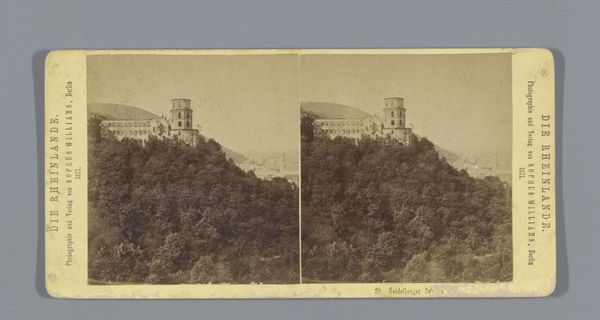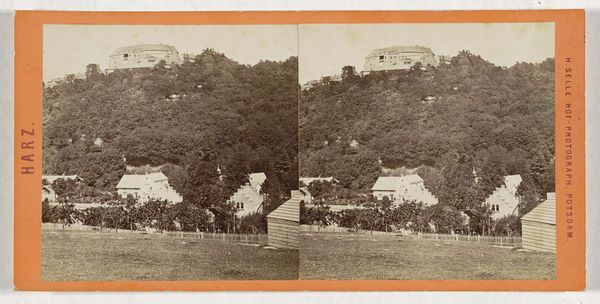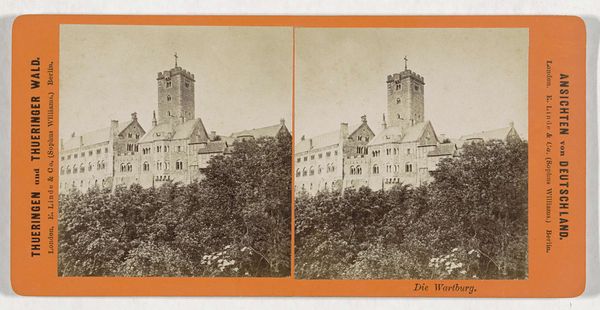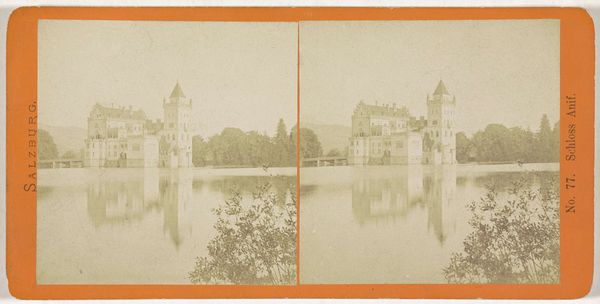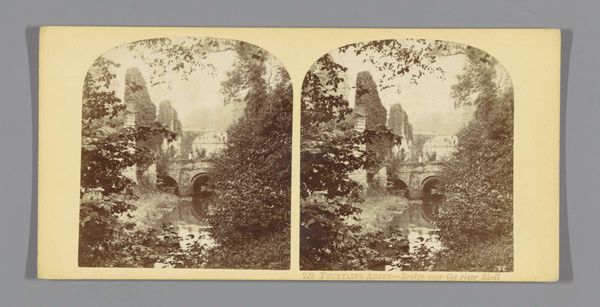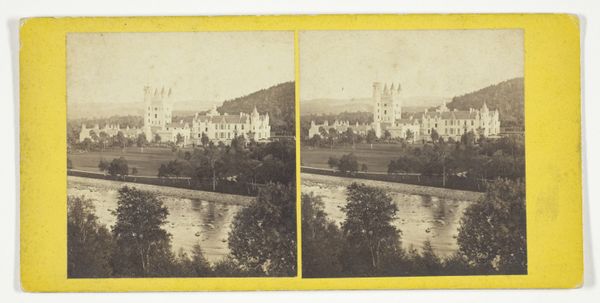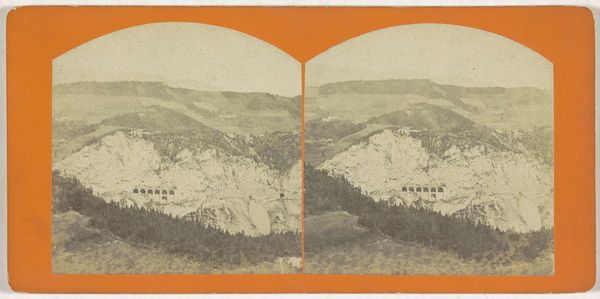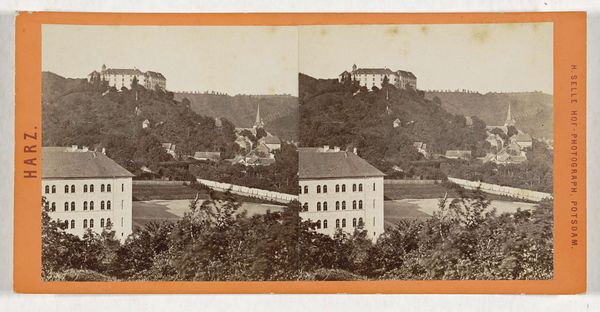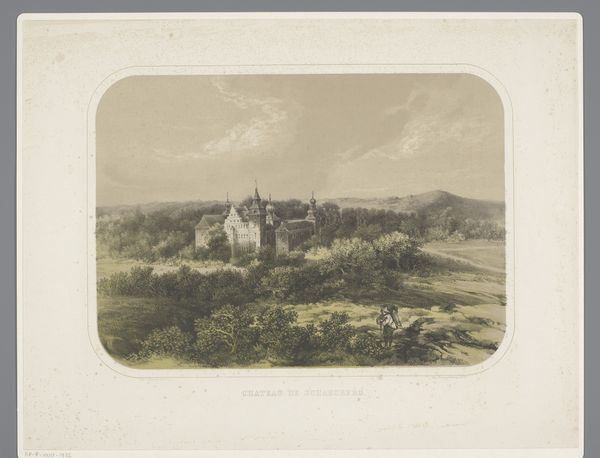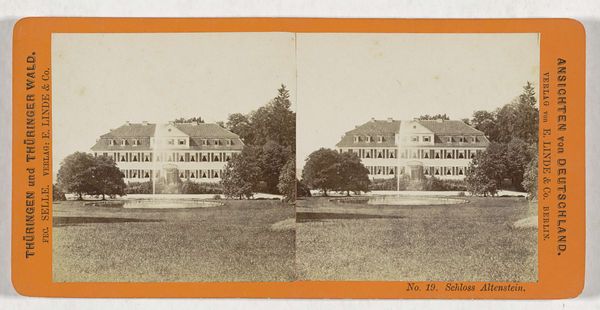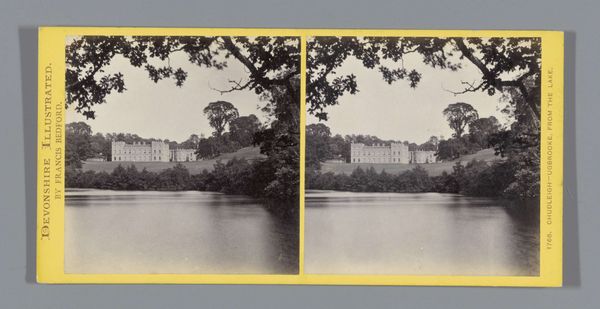
Dimensions: height 86 mm, width 176 mm
Copyright: Rijks Museum: Open Domain
Editor: We’re looking at Hermann Selle's "Gezicht op kasteel Wartburg, Eisenach," a gelatin-silver print made sometime between 1868 and 1890. There’s a definite Romantic feeling to it. The castle looms above a dark forest; it's very picturesque. How do you interpret this work? Curator: It's fascinating to consider this image in its historical context. Wartburg Castle held tremendous significance in German history and national identity. Think about its association with Martin Luther and the translation of the Bible. Editor: Right! Luther hid there, didn't he? Curator: Exactly! Now, photography in the late 19th century, especially with a landmark like this, played a key role in shaping a collective cultural memory and sense of national pride. What’s implied in depicting a particular landscape or piece of architecture and distributing this imagery widely? Editor: It suggests an effort to unify people around a shared symbol and idealize German heritage? Kind of like propaganda, almost? Curator: Indeed. Notice how the artist frames the castle as a symbol of power and permanence. The image appears for sale with the name and location written at the bottom. Editor: It’s like an early postcard, fostering a sense of ownership or connection with the place, and marketing an ideal of Germany itself! Curator: Precisely. This seemingly simple image opens a window onto a complex interplay of photography, national identity, and the commercialization of cultural heritage. Editor: I never thought about the photograph itself being part of constructing that identity. Thanks! Curator: My pleasure. It highlights how the political can reside in even the most scenic of imagery.
Comments
No comments
Be the first to comment and join the conversation on the ultimate creative platform.
